Author: Brian Hall
Released by YCH Hops in early 2017 and debuted to homebrewers at the 2017 Homebrew Con in Minneapolis, MN, LupuLN2 Cryo Hops consist of lupulin powder that has been separated from the vegetative matter of whole hop cones. This is said to allow brewers to pack a more pungent punch of hop aroma and flavor in their beer without all of the vegetative cone material, which is said to both eliminate astringency while decreasing volume losses. All the good without the bad.
Brewers began experimenting with Cryo Hops soon after their release, with some going so far as to produce beers hopped solely with this novel product. While even Cryo critics have argued they do pack a punch, there’s been some contention that eliminating the vegetative hop matter leads to a more one dimensional flavor.
I was excited about to try Cryo Hops out for myself and got a hold of some from pretty early on, mostly using it as whirlpool and dry hop additions in my hoppy ales. Never the wiser as to how it was actually affecting my beers, I figured it best to put it up against the more commonly used pellet hop to see how the compare!
| PURPOSE |
To evaluate the differences between Pale Ales of a similar recipe made using either pellet hops or LupuLN2 Cryo Hops.
| METHODS |
I designed a hopped up Pale Ale of moderate OG for this xBmt. While a juicy NEIPA was tempting, I wanted to make sure any differences between pellet and Cryo hops weren’t covered up by higher alcohol or yeast character.
Cryo Me a River
Recipe Details
| Batch Size | Boil Time | IBU | SRM | Est. OG | Est. FG | ABV |
|---|---|---|---|---|---|---|
| 5.5 gal | 60 min | 39.7 IBUs | 3.9 SRM | 1.055 | 1.012 | 5.6 % |
| Actuals | 1.055 | 1.005 | 6.6 % | |||
Fermentables
| Name | Amount | % |
|---|---|---|
| Pale Malt (2 Row) US | 10 lbs | 90.91 |
| Vienna Malt | 1 lbs | 9.09 |
Hops
| Name | Amount | Time | Use | Form | Alpha % |
|---|---|---|---|---|---|
| Citra | 12 g | 30 min | Boil | Pellet | 14 |
| Citra | 12 g | 15 min | Boil | Pellet | 14 |
| Citra | 24 g | 5 min | Boil | Pellet | 14 |
| Citra | 97 g | 1 min | Boil | Pellet | 14 |
| Citra | 114 g | 0 min | Dry Hop | Pellet | 14 |
Notes
| CRYO HOPS HOP SCHEDULE: 7 g @ 30 min 7 g @ 15 min 14 g @ 5 min 57 g @ 1 min 57 g @ dry hop Water Profile: Ca 126 | Mg 0 | Na 0 | SO4 118 | Cl 135 |
Download
| Download this recipe's BeerXML file |
I collected the full volume of RO water for both batches in a single kettle a day ahead of time, adjusting it to my target profile before setting up my heat stick for pre-heating.
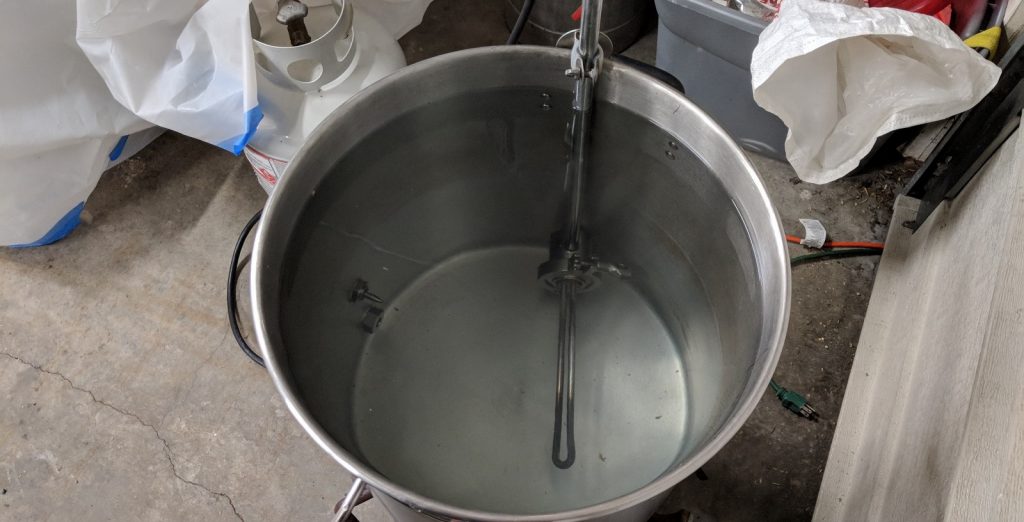
My first order of business on brew day was weighing out and milling the grain.
After transferring half of the strike temperature brewing water to a separate kettle, I mashed in on the batch that would receive pellet hops then did the same on the Cryo Hops batch 10 minutes later. Both hit the same target mash temperature.
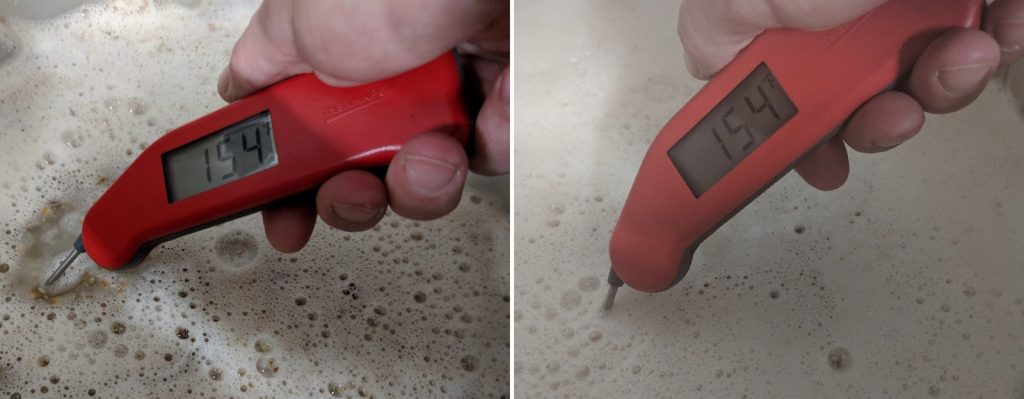
Both mashes were wrapped in insulation and left alone for a 60 minute rest.
When each mash was complete, I removed the grain bags and let them drip until identical volumes of wort were collected.
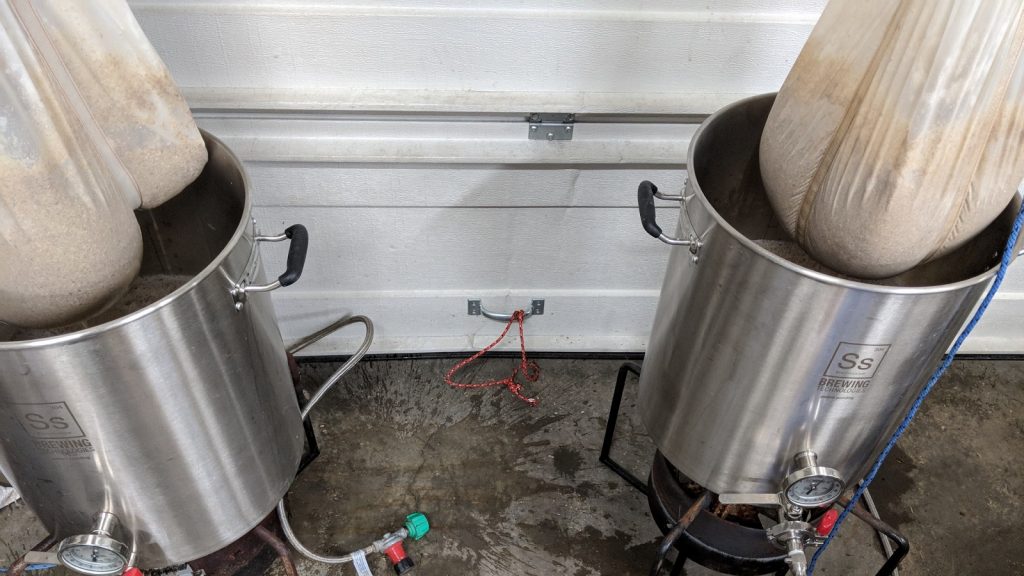
While the pellet hop wort was heating up, I weighed out the kettle hop additions for both batches. The amount of Cryo Hops used in the kettle was based on its expected IBU contribution, with both batches being designed to reach the same level of bitterness.
The worts were boiled for 60 minutes with hops added as stated in the recipe.
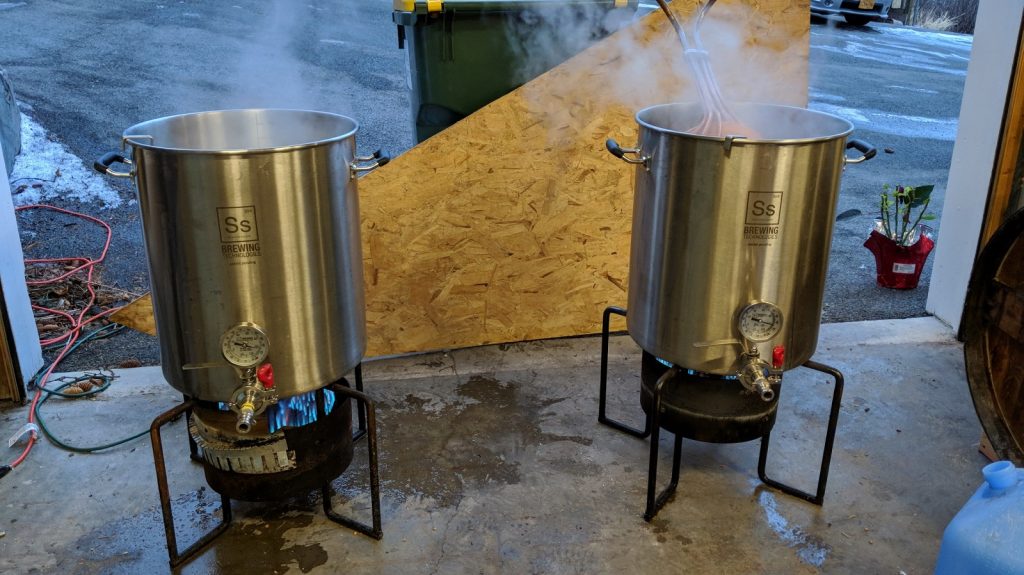
When removing the hop filter after each boil was complete, I noticed an obvious difference in the amount of residual vegetative material.
I quickly chilled each wort to 68°F/20°C with my immersion chiller, an easy task during the Anchorage winter.
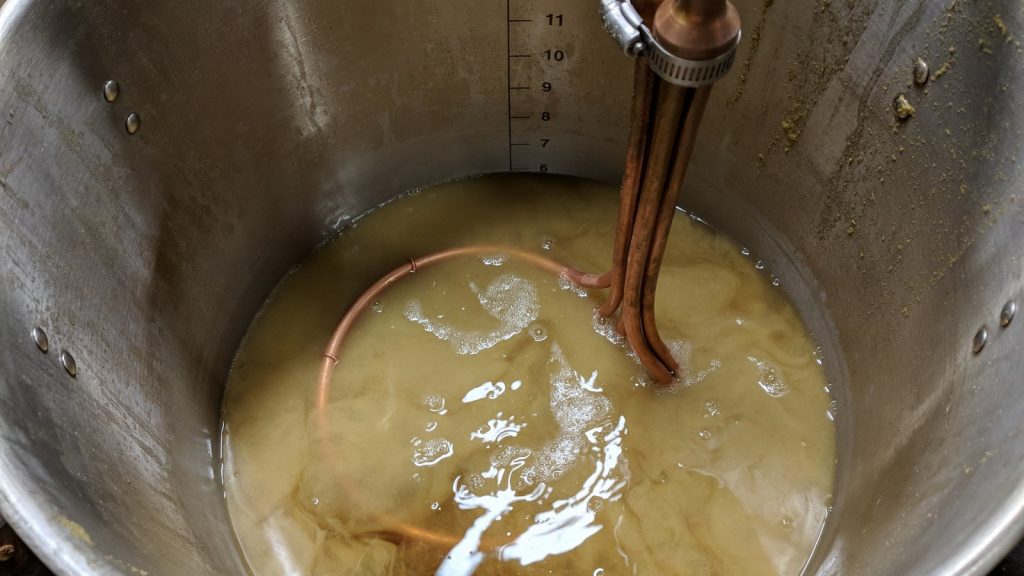
Refractometer readings of the worts revealed they’d achieved the same 1.055 OG.
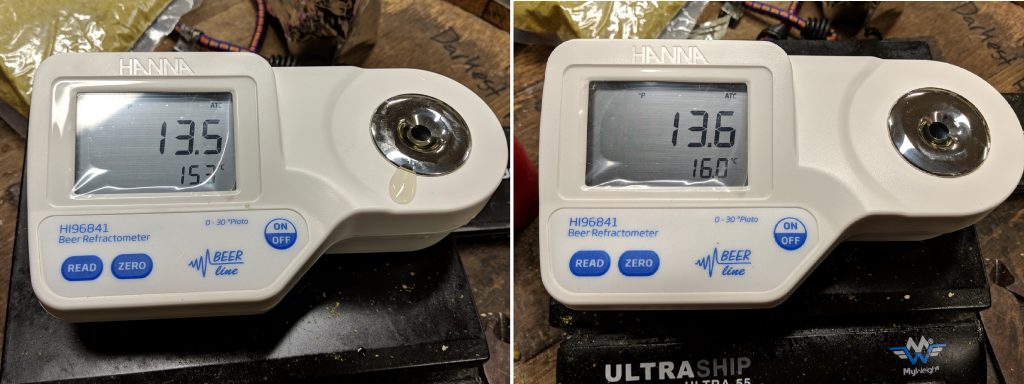
I racked equal amounts of either wort to glass carboys then pitched each one with a fresh can of Imperial Yeast A07 Flagship.
The beers were placed in my fermentation chamber and left to ferment. In typical West Coast style, I held off on adding the dry hop charge until fermentation had tapered off, which was just over 1 week after brewing. Per the manufacturer’s recommendation, the Cryo Hops dry hop charge was 50% that of the pellet hops. While the pellet hops quickly integrated into the beer as expected, the powdery Cryo Hops hung around on the surface, an issue I’ve read about with this product.
After 2 days on dry hops, the beers were ready to be packaged. A visual comparison of the trub on either batch seemed to support claims of improved yield.
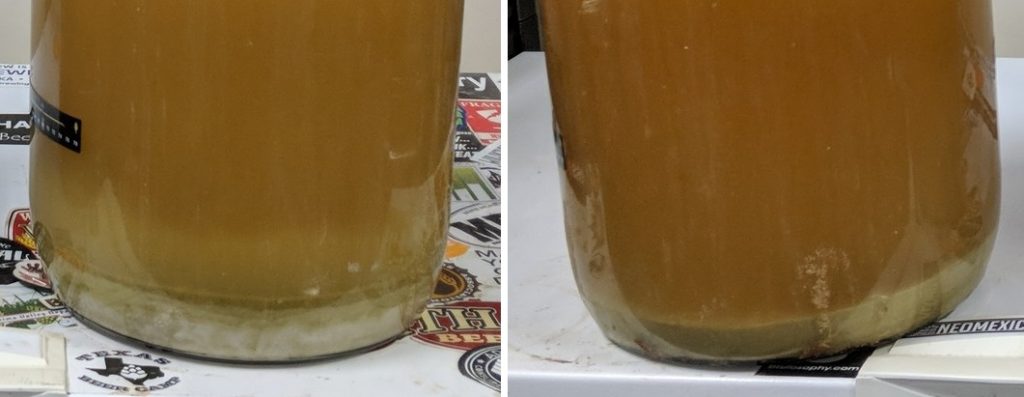
Hydrometer measurements at this point showed both beers reached the same low FG, making these some of the driest beers I’ve made in awhile.
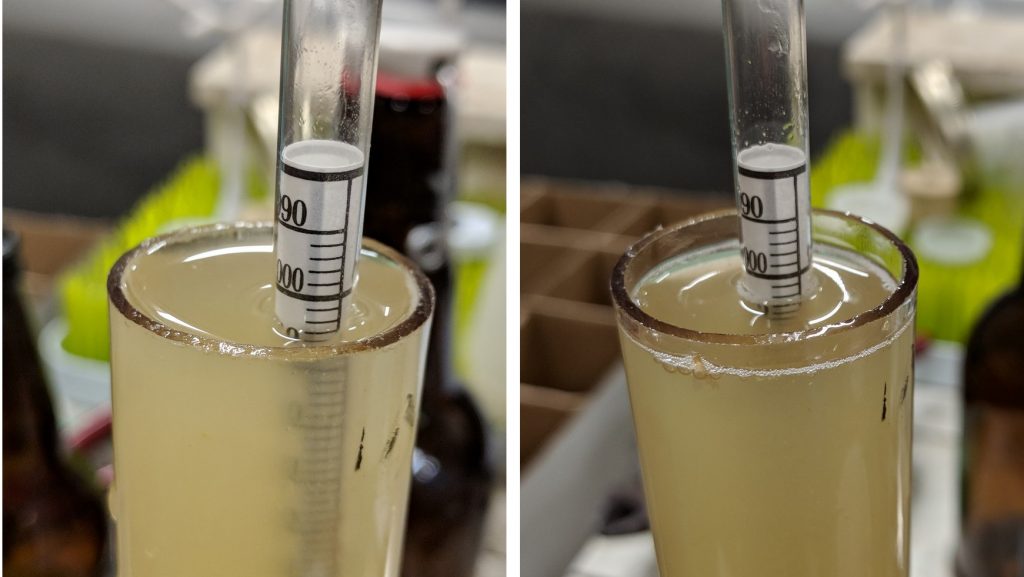
Both beers were then racked under pressure to CO2 purged kegs.
I placed the filled kegs in my kegerator and hit them with a brief period of burst carbonation before reducing the gas to serving pressure. After a few days of conditioning, they were ready to serve to participants. I thought it was interesting how the Cryo Hops beer seemed to clear a little more than the one hopped with pellets.
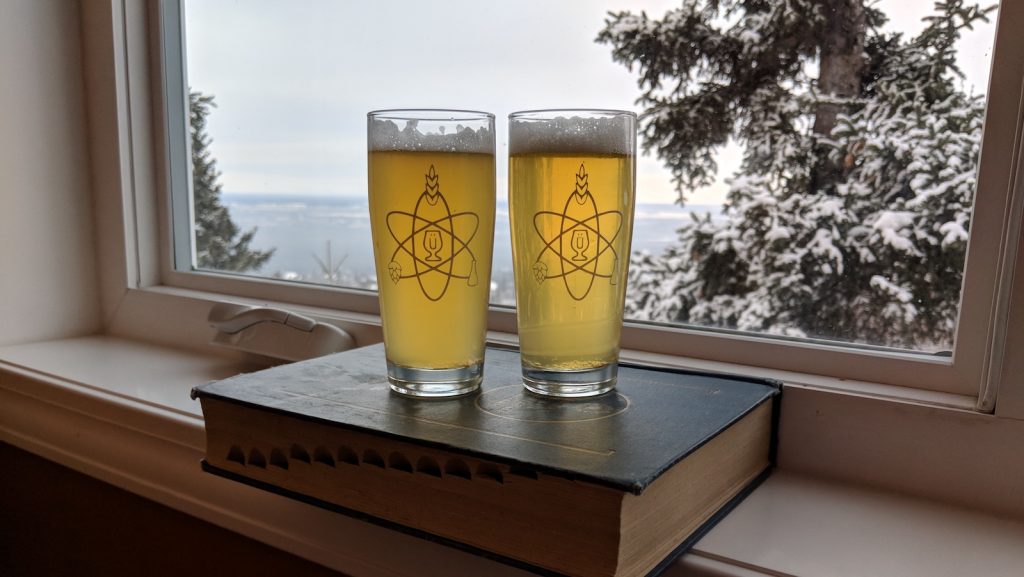
| RESULTS |
A huge thanks to Girdwood Brewing for allowing me to collect data at their beautiful facility.
A total of 21 people of varying levels of experience participated in this xBmt. Each participant was served 2 samples of the pellet hop beer and 1 sample of the Cryo Hops beer in different colored opaque cups then asked to identify the sample that was unique. While 12 tasters (p<0.05) would have had to identify the unique sample to reach statistical significance, only 5 (p=0.88) made the correct selection, indicating participants were unable to reliably distinguish a Pale Ale hopped solely with pellet hops from one hopped only with Cryo Hops.
My Impressions: Despite my best efforts, and even with the preconceived idea of what to look for, I was unable to tell these beers apart over multiple triangle test attempts. If anything, perhaps I should receive tasting “street cred” for being unable to even achieve guessing the correct one with 1/3 probability. The beer ended up drier than I expected, which believe is due to the new base malt I used, but overall it’s a crushable Summer citrus beer. I agree with one taster’s summaring– “I could drink the shit out of this!”
| DISCUSSION |
Cryo Hops are marketed as a product that allows brewers to impart intense levels of hop flavor and aroma using a fraction of the typical amount of hops, leading to less astringency and vegetal flavors as well as improving beer yield. There was a small difference in trub between the beers in this xBmt, which can be explained by the fact the Cryo Hops batch simply received a smaller amount of hop material than the pellet hops per the recommendation of YCH Hops.
Results showing participants in this xBmt were unable to tell apart beers hopped with either pellets or Cryo Hops suggests the latter can be used at lower rates to achieve similar aroma and flavors. While the trub differences on the homebrew scale may not have had a huge impact on the homebrew scale, it could definitely lead to improvements in yield on larger professional brewing setups.
Then there are the claims of reduced astringency and vegetal flavors when using Cryo Hops. Contrarily, tasters’ inability to distinguish between the beers in this xBmt indicate all the extra vegetative hop matter in the pellet hops beer didn’t have enough of an effect to change the perceivable character of the beer. I used 8 oz/227 g of pellets in the 5 gallon/19 liter batch for this xBmt, which is quite a bit even for an IPA, so I’m not really sure what might explain this finding.
I fully expected these beers to taste different and figured the Cryo Hops batch would end up being preferred due to its cleaner hop profile. I brew and drink a lot of hoppy IPA, particularly of the New England variety, and I’ve definitely perceived what I believe to be astringency in some examples. If this issue is caused by the heavy use of hops, the strigs and bracts of which contain tannins, it makes sense that leaving that stuff out would reduce the risk of astringency.
In addition to exploring this aspect of Cryo Hops more, I look forward to experimenting with higher amounts to see if I can’t milk it for even more potent hop character. That said, at over triple the price of pellet hops, my future use of Cryo Hops will likely be primarily for exBEERimental purposes.
If you have any thoughts about this xBmt, please do not hesitate to share in the comments section below!
Support Brülosophy In Style!
All designs are available in various colors and sizes on Amazon!
Follow Brülosophy on:
FACEBOOK | TWITTER | INSTAGRAM
If you enjoy this stuff and feel compelled to support Brulosophy.com, please check out the Support page for details on how you can very easily do so. Thanks!

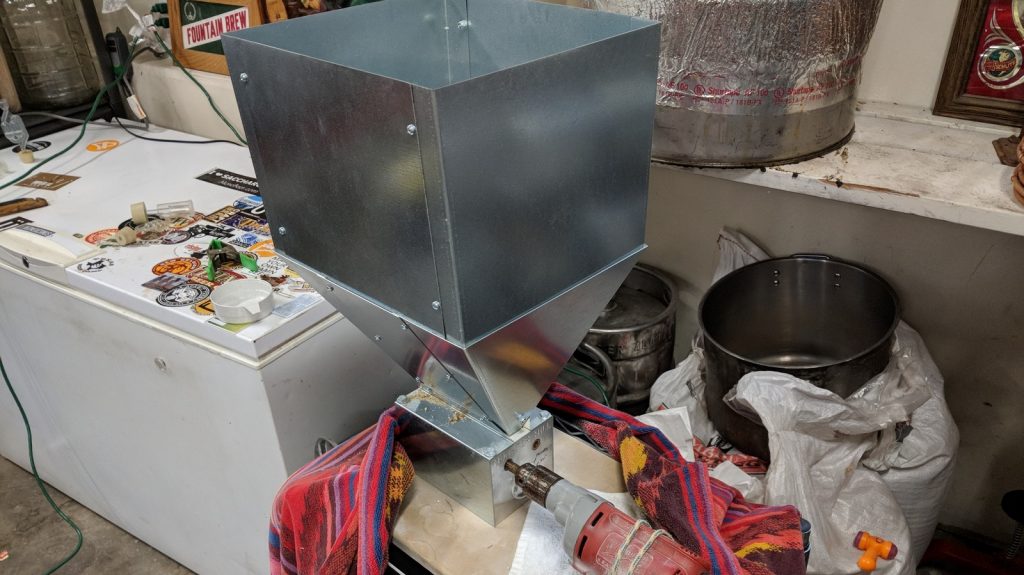
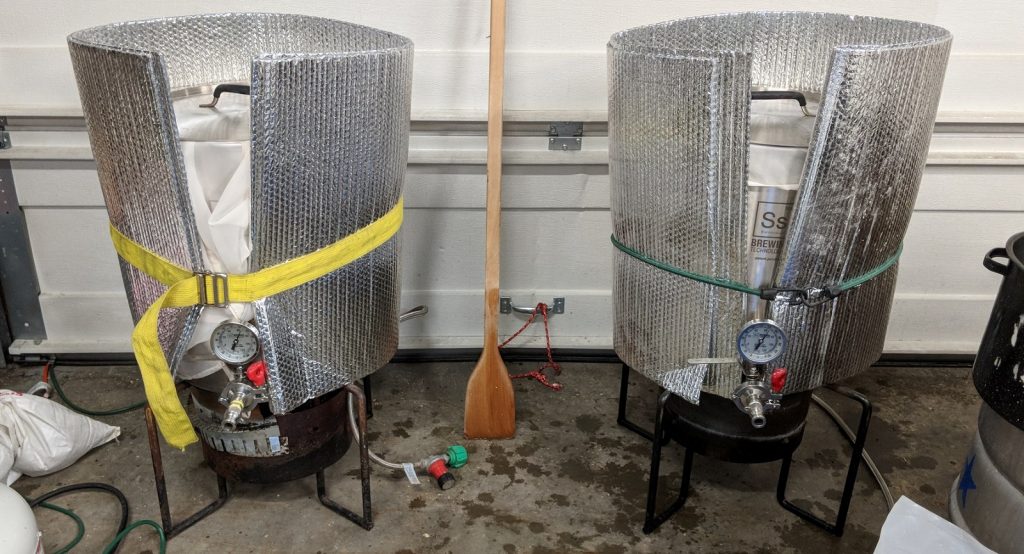
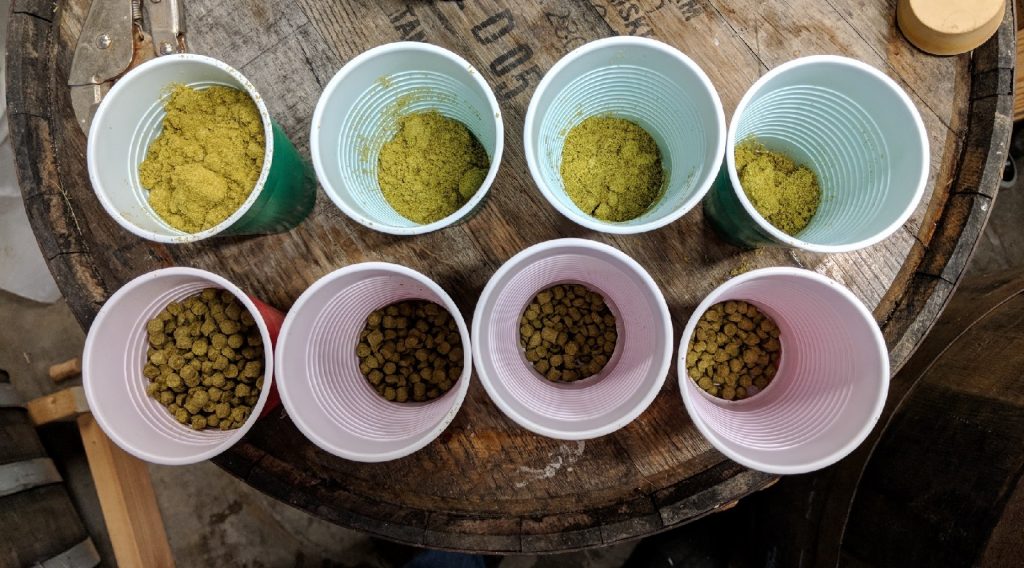
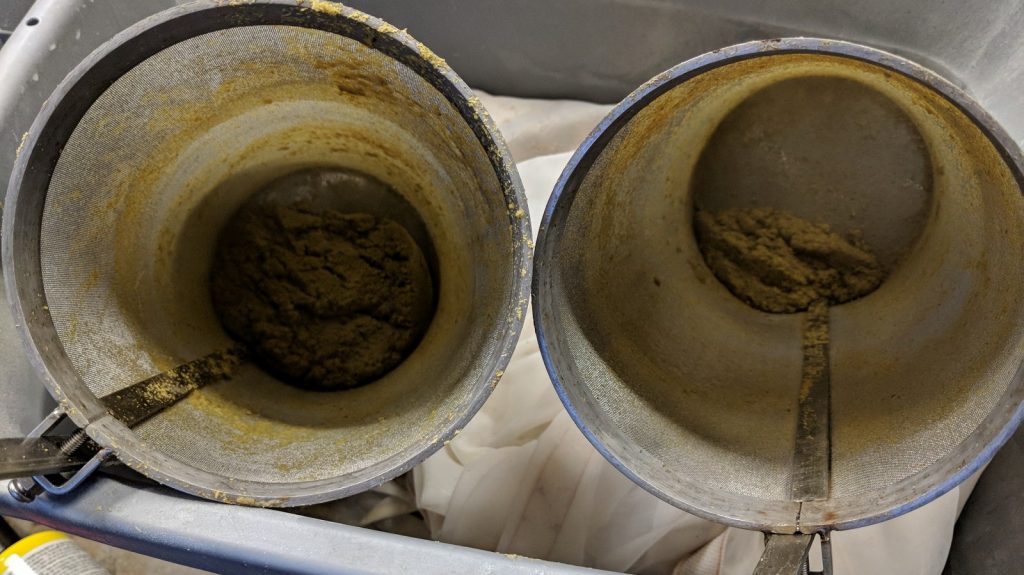
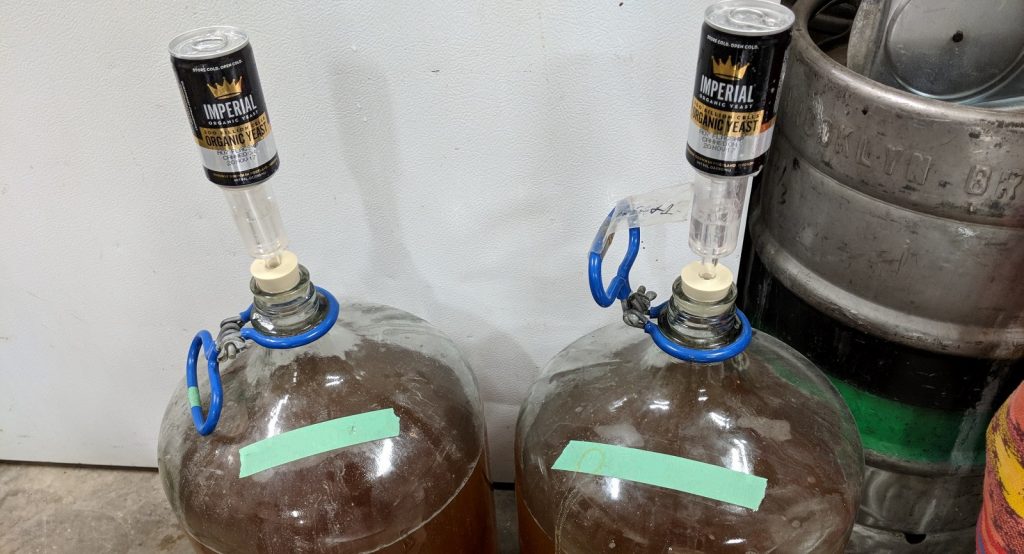
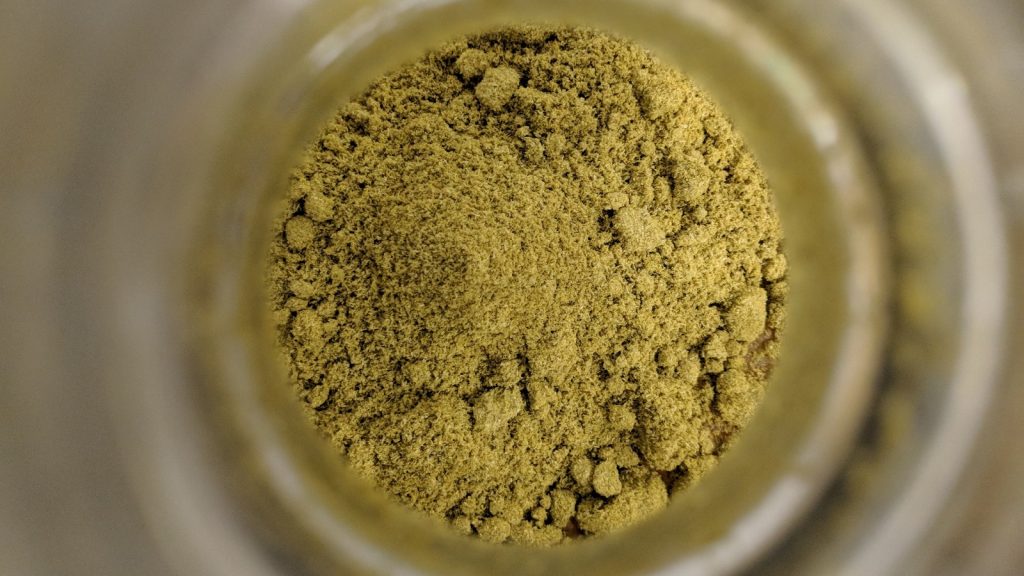
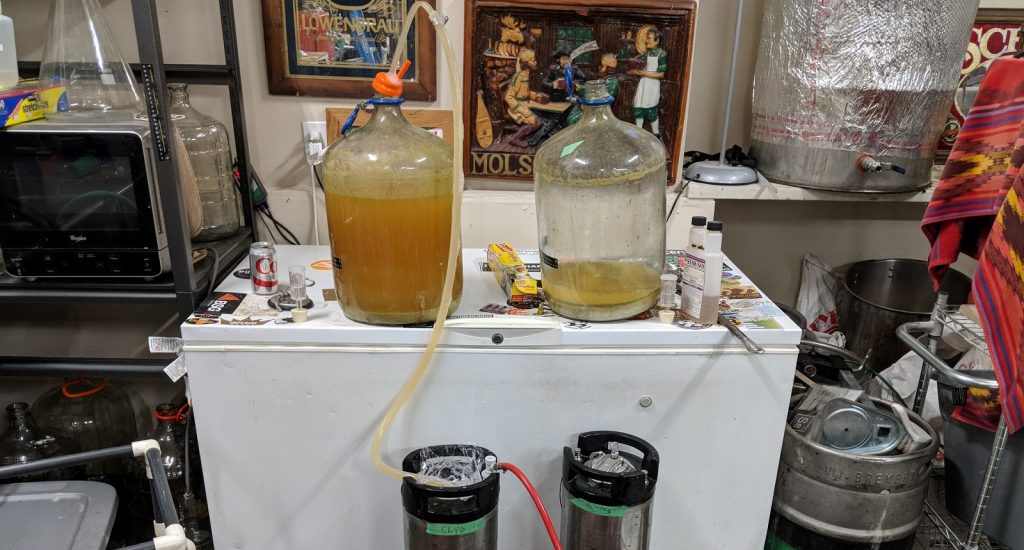











42 thoughts on “exBEERiment | Pellet Hops vs. LupuLN2 Cryo Hops In An American Pale Ale”
some people say they shine best as a keg hop
That would be great to try!
I use them as keg/dry hop, but will also use them in whirlpool situations as well. I’m not seeing the “triple the price tag” though that he mentions. At MoreBeer they’re exactly 2X the cost, but since you only use half the amount it comes out to the same price. I can’t compare cryo keg hops to regular pellets in the keg as I’ve never used them, but I leave them in until the keg kicks (about 6 weeks) and the flavor really stays on point until about weeks 6. Still no vegital taste, but you lose some of that NEIPA freshness by that point.
Quick question for ya – at what psi are you burst carbonating and for what duration before bringing down tonserving pressure? Thank!
As always, great work! It would have been interesting to see what the results would have been if you used equal amounts of hops in each batch. I know people say to use 1/2, but I’ve found they really shine using closer to equal amounts. Allows for the hops to be bright and pronounced without getting funky or bitter, more than the norm pellets would. I see them as less of a concentrated version and more of a filtered version of the hop.
This is a great example of how terrible people really are at tasting when they go in ‘blind’. The participants and yourself were unable to distinguish them ‘blind’. Then we have Scott Janish’s results in which he claims to have been able to distinguish them: http://scottjanish.com/lupulin-powder-vs-pellets-experiment/
I find this fascinating.
Bias’s are a hell of a way to make you believe things.
What do you mean by terrible? I wasn’t blind to the xBmt, and I was still unable to identify the odd sample out.
Which part is fascinating?
Thanks!
I guess I’m not sure what I was rambling about.
My fascination is with the fact Scott Janish found a difference, but you taste testing did not.
I’m not sure what kind of tasting Scott did, maybe his beers were different! They were a different recipe (and brewhouse) than this one. All kinds of different variables and tasting methods!
In my experiment the difference was very subtle and almost negligible.
I like the work that Scott does in his experiments but this one on LupuLN2 vs pellets was not very convincing for me.
Hop additions were mixed up and there were a lot of preconceived expections on what the experiment should provide in the results. It appeared there was no independent or blind assessment of the beers so I’m hesitant to accept the findings.
I’m personally not a fan of leaving hops in a keg for the duration of the kegs life because I think it leads to the vegetal flavors that were discussed in his results (no data to support this,just opinion).
The local homebrew shop near me has them priced at about 2x of their pellet hops. At 2x price and 2x strength, I’ve purchased both the cryo and the normal pellets, but hadn’t noticed any particular benefit. This exbeeriment confirms to me that I’ll just keep sourcing whatever is more economical or whichever is in stock for the variety I need.
Very interesting, even if the results were not as expected.
Just curious, when you pull your hop filter in order to submerge your chiller, do you do anything to save the liquid in the filter? I always hate to simply dump that liquid down the drain, but worry about HSA if I pour it into the wort.
I notice in one picture they seemed to have an equal slight haze. Did either of these beers clear faster then the other? Or did the slight haze remain in both beers? Thanks for the xbrmt.
Never mind, I must have missed your comment in the article when I first read it.
What was the new base malt?
I’m curious about this as well.
Franco Belges Pilsner. New to me, at least!
I’m shocked people were unable to distinguish between these beers. I wonder if a little more residual sweetness might have helped tasters discern a difference. 1.005 is a pretty dry beer. Thanks for the awesome exbeerament!
No problem! I’m not sure how sweetness would have helped, but it might be worth a try!
I would be interested in knowing exactly how much better your yield was. From what I see in the pictures, it doesn’t appear to be much. If there is little, if any, benefit in flavor and aroma, I wonder whether the benefit in yield would justify the price difference (which is about 2.5x pellets locally). I wasn’t initially convinced that participants would tell the difference between the beers but I was sure the amount of hop trub would be far less.
Side note, the hop additions are way different if the recipe section than your notes. What am I missing?
I’ve found they are best used as a keg hop. I stopped keg hopping my NEIPAs because of vegetal flavors, but these don’t leave that flavor and bring back that pop you get from keg hopping. I probably will never make one again with out them! By the way, the pellet version is better than the powder, they are way easier to work with and have better flavor in my experience!
I’m using the rest of my powder then its on to pellets!
Did the dry-hop CryoHops eventually integrate into the beer on their own, did you stir them in, or did they just sit on top?
Thanks very much.
I swirled the carboy to get them into solution. In the past I’ve bubbled CO2, but found it was just more work than worth.
I suppose you have proved that there is no difference in taste between the 2 and that benefit of less trub would be more pronounced at the commercial level where instead of loosing 500ltrs in hop trub, you loose 200lts. As homebrewers, its less than a glass but as a commercial brewer – a fair amount of money.
From a person who thinks organic is the best way to go – a new level of processing a natural product is the start of a slippery slope.
I have had the fortunate chance of seeing YCH Hops Cryo facility and understand their process. Cryo Hops start as a Whole cone and are frozen with liquid Nitrogen and then physically separated into powder and the leaf portion. Once that is complete, the powder, still cold, is run through their pellet mill. That is all the processing that happens, their is no secret ingredients or strange manipulation of the hops. Really this could be done with any hop, including organicly grown ones. You could have organic Cryo.
Hey thanks for the info, do you know if those whole cones are fresh or dried?
If I was noticing a huge loss at a commercial level I’d definitely give cryo a try. I’m not convinced theres anything wrong with how these are processed, it seems to me to be more of a separation than processing.
What was the serving temperature?
36-37F from kegerator, some may have been slightly warmer as I took growlers to events.
Brian, I like the hop filters that you’re using for the boil additions. Do you notice any reduction in hop utilization when using them? I’ve had issues with using hop socks in the past and those look like a good alternative for keeping some particulates out of my pump and chiller.
They may also be a great option for a timed flameout addition to limit the IBU contribution, have you used them that way?
Thanks for all the exbeeriments!
I haven’t done a side by side, so I’m not sure. I haven’t noticed anything different thus far. I’ve also used them as a flameout addition, but not sure they limit IBUs. Would be an interesting test.
I imagine this might be a bit tough to identify precisely given that you keg but did you notice any observable difference in volume yield? You comment on it in terms of trub but I’m curious if you think you squeezed a few more beers out of it. I always mourn the beers lost to hop absorption, particularly w dry hopping.
It was always a sad day for me too. Depending on the beer type, I began wringing the bag out. Not only due to the beer loss, but because of the delicious hoppy elixir that lies inside.
Hard to tell, as the hops had fallen to the bottom, I’d guess maybe I got another pint or two out.
I’m curious why the OG was measured on the Hanna Instruments digital refractometer, and the FG was measured with a regular floating hydrometer.
Refractometers are unreliable when alcohol is present so shouldn’t be used for FG readings
Click on the photo of his refractometer and in the review he explains how to deal with this issue. FG can be calculated with online calculators if you know your OG
We just did a NEIPA with a ton of pellet hops and it lasted a couple of months in the keg before it lost its aroma and flavor, would the Cryo Hops help it last longer or is its shelf life due to higher protein percentage?
Brian thanks for the experiment, have just started going thru the podcast and was banging around and found this. I guess what I would like to see is how these perform in a NEIPA. Where I think they would shine is on very late additions where you have the tendency to pick up vegetal matter. Experimental home brewing did pretty much the same thing, and this simply proves what the vendor was stating, they can be replace normal hops at a 2(hops) to 1(cyro) ratio. I think a good experiment would be a heavily dosed NEIPA with pretty much regular pellet hops used throughout the hot side and then on one do the pellet and the other do the cyro for the dry hopping. I guess I am more sensitive to this than most, but I find the vegetal taste on most NEIPAs somewhat off putting. Again thanks for the effort put into this.